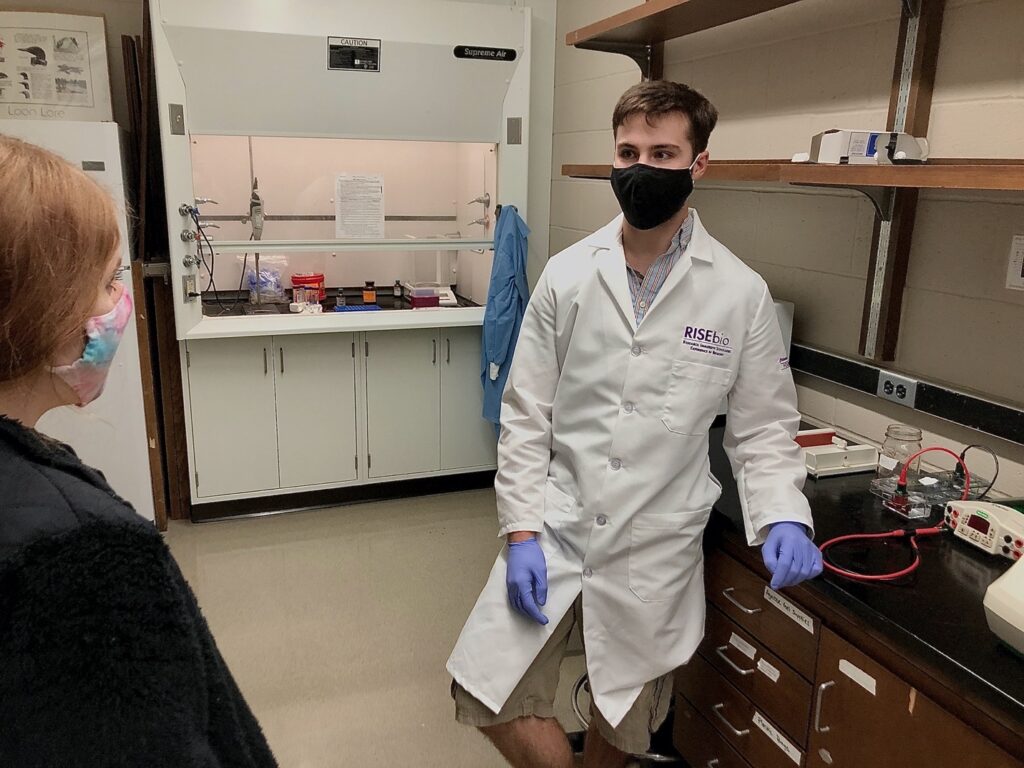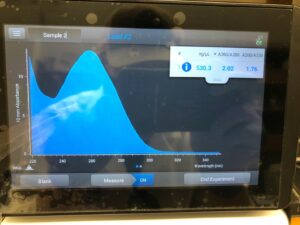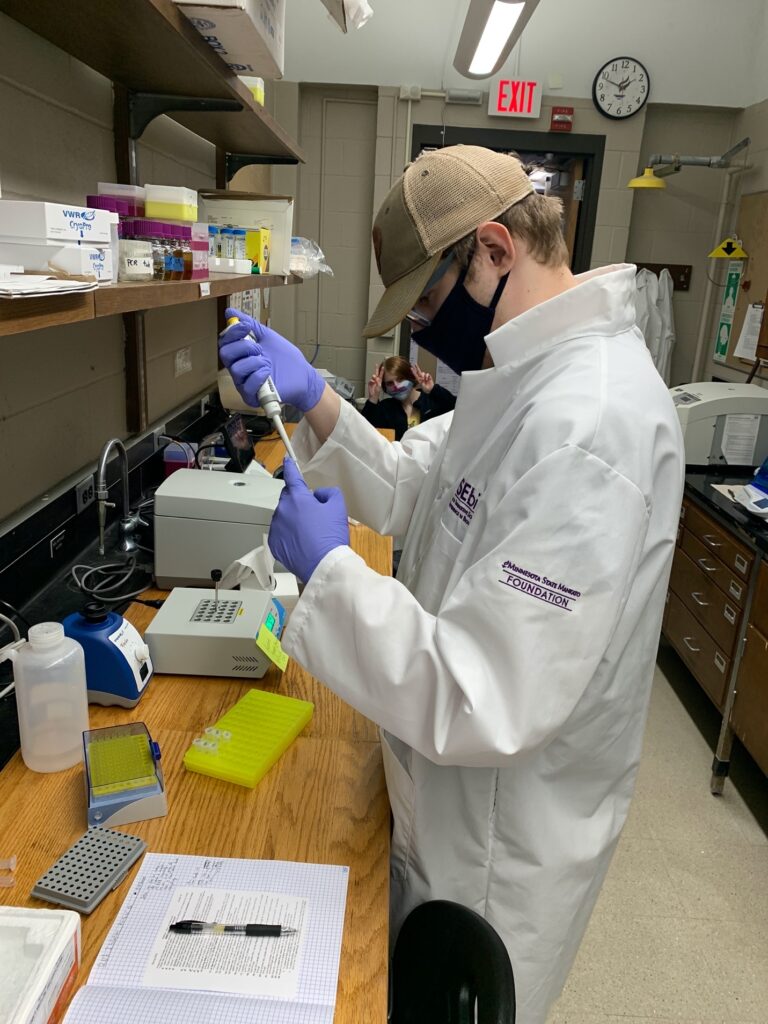
September 26, 2020
By: Alex Calli-Wehrman and Matt Bromann
Hello, our names are Alex and Matt. We are currently researching the green anole lizard (Anolis carolinensis), and we are focusing on the LIG4 gene. In green anole lizards, genes are expressed during breeding and nonbreeding seasons. The goal of our research stream, led by Dr. Rachel Cohen, is to determine which genes are expressed during which season and why they are or are not in the other season.


In the past few weeks, we have been practicing for our actual samples. We have been doing a lab protocol called RNA isolation on green anole liver samples to practice our brain samples. An RNA isolation is where a piece of tissue is homogenized, or blended, to create sludge. This sludge is then mixed with various chemicals from buffers to DNases to extract RNA from that tissue sample. After a sample of RNA is extracted, it must be tested to see if it is usable or not. To test this, we used a machine called a nanodrop to test the concentration of RNA and its purity (called a 260/280 number). After using the nanodrop, we then used gel electrophoresis, which uses electricity to determine DNA length or RNA length. In our case, we were looking to see if we had distinct bands in the gel. If there were two bands, then the RNA we had was suitable. Just this week, we used our first brain sample (and a few of the pictures in this very post have an example of a nanodrop and gel of that sample!). We did not use the full lizard brain, but a portion of it called the hypothalamus. The hypothalamus is the control center for a process in all organisms called homeostasis, and homeostasis regulates how the body works. In green anole lizards, it controls what genes get turned on or off during which breeding season. We received six brain samples, with at least one of each lizard brain in a breeding or nonbreeding season. In the following weeks, we will be doing more RNA isolations for the rest of our brain samples and then creating DNA from the RNA we isolated.

Overall, our experience in the lab this year has been pleasant despite Covid-19. We have been able to have lab meetings in person, and still have some one-on-one time with the peer mentors and TAs. Our liver samples had great purities and low concentrations, but our first brain samples had good purity and the right concentration. We are now learning how much work goes into a research project as we get further into our stream. Until next time, this was Alex and Matt.

